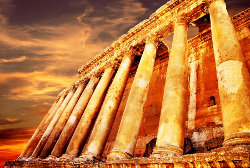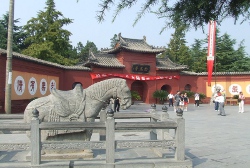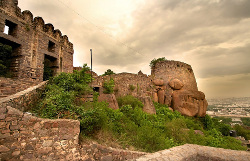New Years Across The Globe
- By: Guest Blogger
- Published: 07 January 2013
 2013
2013
To the contemporary Western World, 1 January is more than just the first day in a new year. It’s an opportunity for a fresh start, a promise of better days and an acknowledgement of growth. Having this fresh start any other time in the year seems absurd to us. But 1 January hasn’t always been the beginning. We reveal how, and when, New Year is celebrated across the globe with an interesting history showing the reasons for the different celebrations.
The Julian Calendar
 Temple of Jupiter
Temple of Jupiter
The calendar we use and the most widely-used calendar around the world is the Gregorian Calendar. Although it was introduced by Pope Gregory XIII in 1582, he was not the first person to propose January 1 as the new year - acclaimed Roman emperor Julius Ceasar was. The Julian Calendar had 365.25 days and a leap year every four years, much the same as our current calendar. New Year on 1 January was initially celebrated in Baalbek, a Roman Colony. Baalbek is a Lebanese site which hosts the largest Roman temple. Visiting Baalbek today allows you to travel back into an ancient world as you walk through the ruins of the magnificent structures. The temple of Bacchus and the Temple of Jupiter are must-sees. At the time, New Year was celebrated through drunkenness and bloodshed: cage fights were a common way to ring in the new year.
Today, the Julian calendar is still celebrated by the Berber people of North Africa and on Mount Athos. The Berber Calendar was adopted from the Julian Calendar and is used to balance seasons and agriculture - something the Gregorian Calendar does not take into account.
The Chinese New Year
 White Horse Temple, the first buddhist temple in China
White Horse Temple, the first buddhist temple in China
China has many important traditional holidays, but the Chinese New Year is the most important. The origins of the Chinese New Year is riddled with legends and history. Many believe that it started with a fight against a mythical beast who came to attack the villagers and steal their food each year. One year, the villagers placed food outside their homes and realised that the beast was scared of the colour red. Using this knowledge they managed to scare the beast off and it was never seen again.
The origins of the Chinese Calendar date back to the Shang Dynasty in 1500 B.C. Astronomers observed the stars and moon and used lunar signs to create and adapt the calendar. The Shang Dynasty, a powerful family, implemented the calendar. The dynasty focused greatly on the economy and agriculture - factors that the Chinese Calendar took into account. It is believed that the base of the Shang Dynasty was Yellow River Valley - thousands of bronze artifacts have been discovered in the area. The Dynasty controlled the city of Henan, where it is believed that the Chinese New Year was first celebrated. Henan is also home to White Horse Temple, the first Buddhist temple in China as well as the Shaolin Monastery, which was built in 496 A.D. If you’re heading to China, be sure to visit them. If you happen to be there on February 10, don’t be surprised if you see millions of people wearing red and dancing around - that’s when China will celebrate their New Year.
The Telugu New Year
 Golkonda Fort
Golkonda Fort
Also known as Ugadi, the Telugu New Year is celebrated by the people of Andhra Pradesh and Karnataka, India. Some historians place the origin date to 3102 B.C, the beginning of Kariyuga (the last of four stages the world goes through in a cycle).
It is believed that Lord Brahma started creation on this day. More credibility was given to this day when Bhaskaracharya, an Indian Mathematician, made calculations that concluded New Year should be held in March or April. Ugadi is a day when there is a change in the moon’s orbit and is seen as the beginning of the new Hindu lunar calendar. A reading of the yearly calendar (known as the panchanga) was traditionally heard at the temples or town square. The Telugu New Year will take place on March 1st 2013. There are many beautiful places to visit in Andhra Pradesh, all with a deep history. Chowmahalla Palace, Golkonda Fort and Salar Jung Museum are favourites for tourists who visit the town of Hyderabad, the capital of Andhra Pradesh.
For even more insight into different New Year celebrations around the world, check out our featured article, New Year All Year.
more blog posts